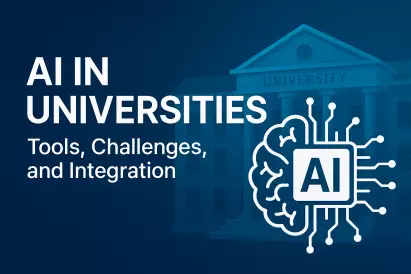Summary: Master’s degrees in Norway continue to evolve in response to globalization and shifting labor markets. This article explores the current and future landscape of master’s programs in Norway, focusing on interdisciplinary trends, flexible delivery models, student expectations, and policy reforms shaping higher education in 2025.
Norway’s Higher Education and Labor Market Landscape in 2025
Master’s degrees in Norway stand at the intersection of a highly developed educational system and a dynamic labor market. Characterized by significant public investment, research-driven instruction, and a focus on both specialized and cross-functional skills, Norwegian graduate education prepares students for global competitiveness.
An 89% employment rate for tertiary-educated individuals and just 3% unemployment underscore the success of Norway’s alignment between education and employment outcomes. As technology and globalization reshuffle skill needs, master’s degrees act as vital tools to upskill the workforce for tomorrow’s challenges.
Emerging Trends Shaping Master’s Degrees in Norway
As we look to 2025, the structure and substance of Norwegian master’s programs continue to shift.
Momentum builds behind programs offering interdisciplinary learning, integration of sustainability, and industrial relevance. Key areas rising in importance include sustainable energy, life sciences, digital innovation, and logistics.
Fields combining environmental responsibility with business sensibilities—like Sustainable Development and Environmental Management—are increasingly prioritized.
Technology-oriented disciplines also experience a boom to match national economic transformation.
Flexibility, Digitalization, and Lifelong Learning
Norwegian universities are innovating with hybrid and online learning platforms to meet the needs of working professionals and international students.
While education remains primarily tuition-free for EU/EEA students, these flexible models broaden access and support Norway’s ambitions in lifelong education.
A dynamic workforce expects alternate learning modes that accommodate careers and upskilling. Similar trends are visible in degrees like E-Business and Digital Marketing and Data Analytics, which are especially robust in hybrid formats catering to digital professionals.
Globalization and Recognition of Norwegian Master’s Degrees
Norway aligns its qualifications with the European Credit Transfer and Accumulation System (ECTS), boosting global mobility and recognition.
Recent developments in vocational and advanced education also improve coherence, ensuring that skills at the master’s level remain consistent across Europe and competitive worldwide.
This positioning benefits both academic and application-based degrees—from theoretical studies in international law to niche programs in Tourism Management or Creative Industries.
Affordability, Scholarships, and Funding Progressions
Norway’s tuition-free education for EU/EEA students is a significant draw. Non-EU students may incur tuition fees, although scholarship funds are available depending on the institution and program type.
Continued funding reform addresses sustainability while enhancing autonomy across higher education institutions.
This policy environment helps master’s programs compete internationally, similar to programs in Leadership and Public Health, fulfilling demand for strategic and human-centered graduates across international borders.
Evolving Student Demographics and Expectations
The student population is increasingly diverse, fueled by global interest in Norwegian education. Students expect diverse course delivery, internship opportunities, and career readiness—factors that are embedded in many programs designed to close skill gaps from emerging labor shortages and an aging population.
The wide appeal of degrees in Entrepreneurship or Health Management illustrates how cross-functional and industry-integrated education caters to modern demands.
Challenges in Norwegian Master’s Education
Despite its strengths, several structural and adaptive challenges persist:
- Sustainability in Funding: Without adequate living support, affordability issues impact international student diversity.
- Curriculum Alignment: As labor markets shift rapidly, aligning higher education curricula with fast-changing industrial needs proves complex.
- Accreditation and Quality Control: The rise of interdisciplinary and vocational master’s degrees tests existing quality assurance frameworks.
- Speed of Technological Change: Educators must adapt curricula quickly to avoid outdated content and skill mismatches.
Innovations and Opportunities for 2025 and Beyond
Norwegian institutions are rewriting the rulebook for graduate education through a multi-pronged strategy:
- Innovative Pedagogies: Teacher-centered lectures are giving way to digital, immersive, and problem-based learning approaches.
- Hybrid Learning Expansion: Hybrid models help reach remote and working learners, nurturing lifelong education ideal for degrees like Green Finance.
- Public-Private Partnerships: Institutions now coordinate closely with businesses to keep curricula market-responsive, enhancing relevance in programs such as Innovation and Project Management.
- Policy Direction: The dual-pillar educational model integrates vocational and academic paths while ensuring consistent quality across levels EQF 5–7.
Looking Ahead: The Future of Master's Education in Norway
By 2025, Norway’s master’s landscape stands as a model of global connectedness, curricular agility, and learner-centric policies.
Students can expect world-class education tailored to real-world utility, particularly within innovation-focused domains. Employers benefit from a pipeline of future-ready graduates equipped with interdisciplinary knowledge adaptable to rapidly evolving markets.
Master’s degrees will continue fueling economic growth, societal innovation, and resilience across all sectors. Programs in domains like Logistics and Supply Chain and Operations Management reflect shifts toward sustainability, flexibility, and high-level problem-solving.



